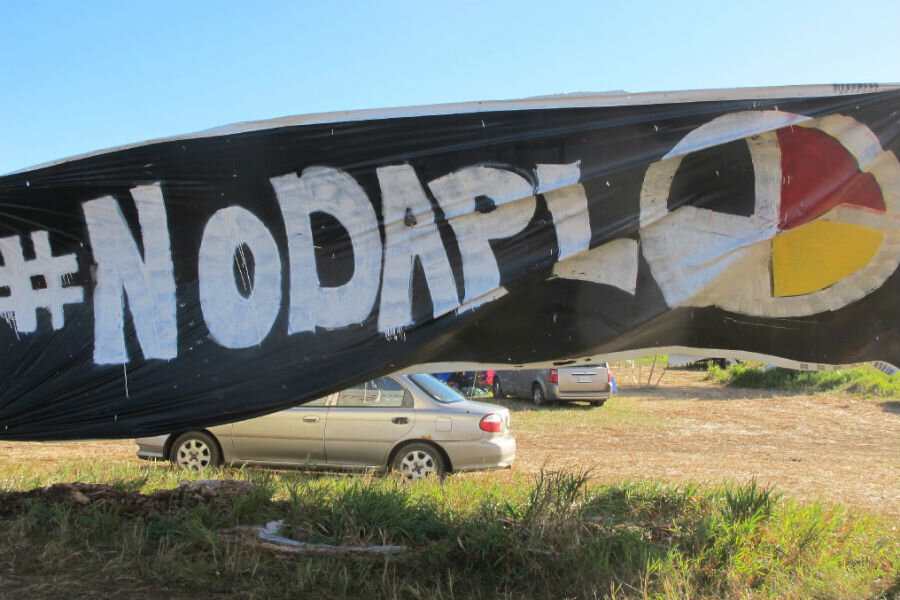Dakota pipeline project paused. What does this mean for the oil industry?
Loading...
A victory for the Standing Rock Sioux and environmentalists came Friday, as the government called for a pause in work on the Dakota Access pipeline. The announcement came shortly after a federal judge had ruled that construction could continue.
For the time being, there will be no construction “within 20 miles east or west of Lake Oahe,” according to a joint statement by the Department of Justice, the Department of the Interior and the Army. Once the confluence of the Missouri and Cannonball rivers, which the Sioux consider sacred, Lake Oahe is an important cultural site. The statement directs the Army Corps of Engineers to look at – and possibly reassess – the decisions which led to the pipeline’s route under Lake Oahe.
The pipeline protest has brought together the Standing Rock Sioux and environmentalists, and inspired a government discussion about how to incorporate the views of native American tribes on infrastructure projects. Energized by the pause, activists in Cannon Ball, N. D., have vowed to continue fighting. But not everyone is rejoicing. The government’s decision to pause the pipeline may have changed the game for those in the oil industry.
"We don’t know what the implications are, other than that it's going to have a huge chilling effect on our national ability to move forward with infrastructure projects," Brigham McCown, former head of pipeline regulator for the US Pipeline and Hazardous Materials Safety Administration, told Reuters on Sunday. Now an industry consultant, Mr. McCown said the pause “came out of left field” and was unprecedented.
North Dakota’s Bakken Shale, one of the largest oil developments in the United States, began commercial production in 2006, when a combination of horizontal drilling and hydraulic fracturing (“fracking”) made oil extraction possible. Since then, exploitation of these resources has reportedly driven the state’s oil production four times higher than its previous peak in the 1980s. The pipeline was expected to become operational later this year, sending North Dakota’s shale play through Illinois to refineries in the Gulf Coast.
With the pipeline pause, where can the oil go?
One option is that the pipeline could be rerouted. Previous protests have led to such a compromise: In 2014, Kinder Morgan, Inc., changed the path of their pipeline after environmentalists, politicians, and residents in Massachusetts objected to the destruction of forests, parks, and other sites that installing the pipeline would cause. But the planned reroute did not appease the pipeline’s critics.
Reroutes can be expensive and time-consuming. According to McCown, such a move could set the project back by years. He says it takes time to get the necessary permits, including those for water and endangered species.
Until then, the oil will have to be moved by existing means: by rail to the coasts, or through pipelines in the Rocky Mountains toward Oklahoma. The pipelines are already crowded, and rail transport is expensive. That’s a problem for shippers, who have already started buying the oil, which they expected to move via the Dakota Access pipeline. Keeping the oil in North Dakota and waiting for the pipeline to start up is not a viable option, due to a lack of storage space. Shippers may choose to sell their oil at a loss rather than take the financial hit of moving it by rail or using existing pipelines to get the oil to the storage hub in Oklahoma. In the process, oil producers will feel the pinch.
The oil boom has created thousands of jobs in North Dakota since 2006. It’s unclear what, if any, immediate impact the pause will have on these jobs.





